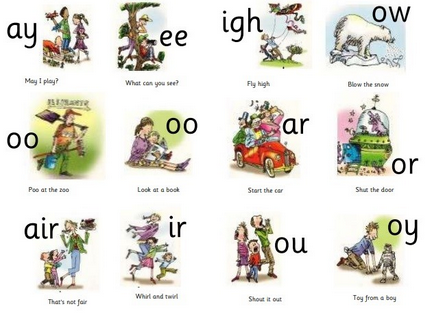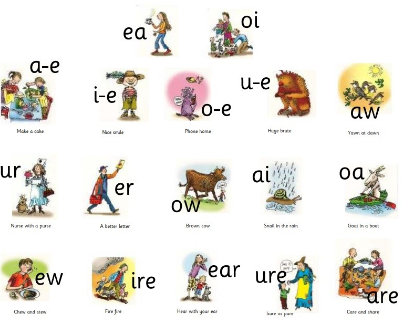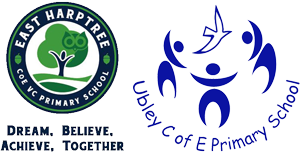RWI Phonics at Ubley School
At Ubley Primary School, we aim for all of our children to become fluent, confident readers who are passionate about reading. Children who read regularly, or are 'read to' regularly, have the opportunity to open doors to many different worlds! Reading gives children the tools to become independent life-long learners. We can achieve this together through:
- Read Write Inc, a programme to help your child read and write
- Encouraging children to develop a love of books by reading to them daily; at home and at school
- Giving children access to a wide range of books at school and at home
We use Read Write Inc Phonics (RWI) in Reception, Year 1 and Year 2 to give your child the best possible start with their literacy. We also use it for interventions for children further on in the school in KS2. We have put together a guide to how the RWI programme works together with some useful links. If you have questions about RWI, please contact the school office, who can refer you to Mrs Howe (Hedgehog Class Teacher) or Mrs Banks (RWI lead teacher) to discuss. Please take the time to read this invaluable information as it will help you to support your child with their reading.
What is Read Write Inc?
Read Write Inc (RWI) is a phonics programme which helps all children learn to read fluently and at speed so they can focus on developing their skills in comprehension, vocabulary, and spelling. It also allows them to spell effortlessly so that they can put all their energy into composing what they write. Small group phonics lessons are taught daily by trained staff and there are consistent expectations across the range of abilities. At the end of each half term the children are assessed to check on their progress.
Children learn the phonic sounds in school which help them to read and write. They can then practise these skills by reading 'Book Bag Books' at home, which are specifically pitched to both consolidate learning and provide challenge in an engaging and fun way!
There are five key principles that underpin the teaching in all Read Write Inc. sessions:
Purpose – To know the purpose of every activity and share this with the children, so that they are aware of the focus.
Participation – To ensure that every child can fully participate throughout the lesson - partnership work is fundamental to learning.
Praise – To ensure that children are praised for their effort and learning.
Pace – To teach at an effective pace and devote every moment to teaching and learning.
Passion – To be passionate about teaching, so that the children can be emotionally engaged.
Reception
In Reception, all children will learn how to identify the sounds in words and recognise how those sounds can be written down. They will then use these skills - 'blending sounds' to read and 'segmenting sounds' to write.
Year 1 and Year 2
Lessons follow the same format as in Reception, but work on complex sounds (and alternative spellings) and read books appropriate for their reading level. Daily sessions of RWI last for one hour - this includes a guided reading session.
The children are taught the sounds in 3 sets.
Set 1 Sounds are taught in the following order together with rhymes to help children form the letters correctly and instantly recognise sounds ready for blending and segmenting.

We do not use letter names at this early stage.
The children are then taught Set 2 Sounds.
Set 2 Sounds
ay: may I play
ee: what can you see 
igh: fly high
ow: blow the snow
oo: poo at the zoo
oo: look at the book
ar: start the car
or: shut the door
air: that’s not fair
ir: whirl and twirl
ou: shout it out
oy: toy for a boy
Once the children have confidence in using Set 1 & Set 2
Set 3 Sounds
ea: cup of tea
oi: spoil the boy
a-e: make a cake
i-e: nice smile
o-e: phone home
u-e: huge brute
aw: yawn at dawn
are: share and care
ur: purse for a nurse
er: a better letter
ow: brown cow
ai: snail in the rain
oa: goat in a boat
ew: chew the stew
ire: fire fire!
ear: hear with your ear
ure: sure it’s pure?
tion: (celebration)
tious / cious: (scrumptious / delicious)
e: he me we she be
These sounds will be used in the following areas:
Reading
Children will:
- learn 44 sounds and the corresponding letters/letter groups using simple picture prompts.
- learn to read words using sound blending.
- read lively stories featuring words they have learned to sound out.
- after meaningful discussion led by an adult, children show that they comprehend the stories by answering questions.
Writing
Children will:
- learn to write the letters/letter groups which represent the 44 sounds.
- learn to write words by saying the sounds and graphemes.
- learn to build sentences orally using adventurous vocabulary.
- start with simple sentences and develop towards more complex ones by the end of the programme.
Talking
Children are assessed so they work alongside children at the same level. This allows them to fully participate in all lessons.
They work in pairs so that they:
- answer every question.
- practise every activity with their partner.
- take turns in talking to each other.
How you can help your child at home:
Blending
Help your child learn to read words by sound-blending (Fred talk) eg. c-a-t = cat, sh-o-p = shop. Children learn to read words by blending the letter-sounds that are in the Speed Sounds set. Help your child to say the pure sounds ('m' not 'muh', 's' not 'suh' etc.) as quickly as they can, and then blend the sounds together to say the whole word.
Nonsense words (Alien words)
Research has shown that incorporating nonsense words into teaching reading can be an effective way to establish blending and segmenting skills. However, it is important to ensure that children understand that they are reading nonsense words (and why) so that they are not confused by trying to read the words for meaning. By reading nonsense words children develop their ability to decode individual sounds and then blend them together to read. They are an indicator of early reading skills and work as a quick, reliable, and valid way of assessing children. However, reading nonsense words is only a small part of the Read, Write Inc. phonics teaching.
Spelling with your Fred Fingers
Children are taught to use their fingers to help them write words. The children say the word out loud and break it down into its individual sounds. If a word has 3 sounds children hold up 3 fingers, 4 sounds 4 fingers etc. Children use each finger as they say the sounds needed in the word then they write the letters that represent each sound.
When using Fred Fingers each finger represents one sound.
Reading
Daily reading with your child of their RWI sounds/words or book will support them to develop the skills discussed above. It will aid them to gain confidence in their fluency and pace as readers and become more confident with their sounds ensuring they can use them in all areas of their learning.


